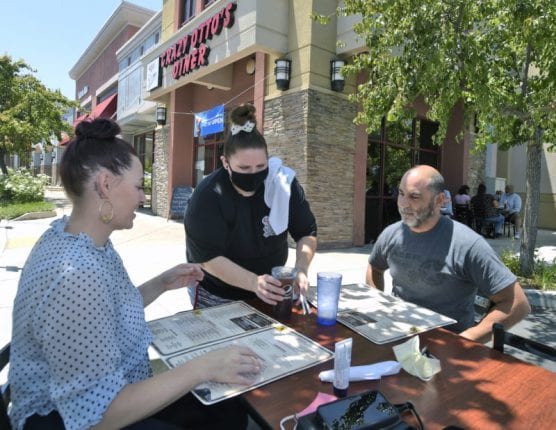
The valley is part of a "wind-tunnel-like-corridor" that connects the high desert with the Oxnard Plain on the coast. These clouds typically retreat out of the valley by midday. Late spring and early summer mornings are often overcast due to the formation of a marine layer off the coast that moves inland overnight. The valley lies within plant hardiness zone 9b. Temperatures often exceed 100 ☏ (38 ☌) on hot summer afternoons but rarely dip below 25 ☏ (−4 ☌) on cold winter nights. The valley features a Mediterranean climate ( Köppen Csa), approaching a semi-arid climate, with hot, dry summers and mild, moderately rainy winters with rare snowfall. The valley is located in the northeastern extreme of the Ventura Basin Province, a petroleum-rich sedimentary basin with a long history of oil and gas production. Neither fault line has been active since the early Holocene era. The much smaller Holser Fault runs east-to-west between the south-eastern Topatopa Mountains and the present day community of Valencia. The valley is bisected by the San Gabriel Fault, which runs through the center of the valley along a NW-SE axis. The southern end of Bouquet Canyon features a large areas of artificial fill stretching from Newhall Ranch Road up to Copper Hill Drive. The far eastern end of the valley features predominantly coarse-grained Tertiary age formations of sedimentary origin. The Santa Clarita Valley is underlain by Quaternary alluvial deposits and coarse-grained Pleistocene age conglomerates dominated by sandstone of marine and non-marine origin. Overlooking Santa Clarita from Ed Davis Park at Towsley Canyon. Upstream is Soledad Canyon which contains the communities of Vincent, Acton, Ravenna, and Agua Dulce. Santa Clarita Valley is connected to a wide array of other nearby valleys: the San Fernando Valley and Los Angeles Basin via Newhall Pass to the south Antelope Valley via CA 14 through Soledad Pass to the northeast the San Joaquin Valley via I-5 through Tejon Pass to the northwest, and Leona Valley via San Francisquito and Bouquet canyons.ĭownstream lies the Santa Clara River Valley, which was given the moniker Heritage Valley by the tourism bureau representing Piru, Fillmore, and Santa Paula. To the west-northwest lies the Topatopa Mountains. The Santa Clarita Valley is bordered by the Lake Piru area, including the community of Val Verde, Los Padres National Forest, and Castaic Lake to the northwest, Sierra Pelona Mountains and Angeles National Forest to the north and northeast, San Gabriel Mountains to the east and southeast, and Santa Susana Mountains to the south and southwest, and Ventura County and the Santa Clara River Valley to the west. ( March 2017) ( Learn how and when to remove this template message) Unsourced material may be challenged and removed. Please help improve this article by adding citations to reliable sources in this section. This section needs additional citations for verification. In time, "little Santa Clara" became "Santa Clarita." Geography The valley later became known as "little Santa Clara" in deference to the Northern California mission and city of Santa Clara, California.

The Santa Clara River was named by Spanish explorers for Clare of Assisi. Adjacent unincorporated communities include Castaic, Stevenson Ranch, Val Verde, and the unincorporated parts of Valencia. Located in Los Angeles County, its main population center is the city of Santa Clarita which includes the communities of Canyon Country, Newhall, Saugus, and Valencia. The valley was part of the 48,612-acre (19,673 ha) Rancho San Francisco Mexican land grant. The Santa Clarita Valley ( SCV) is part of the upper watershed of the Santa Clara River in Southern California.

Location in California Show map of California


 0 kommentar(er)
0 kommentar(er)
